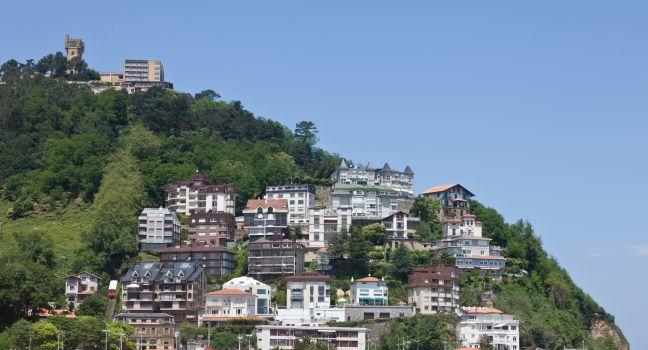San Sebastian

San Sebastián (Donostia in Euskera) is a sophisticated city arched around one of the finest urban beaches in the world, La Kontxa (The Shell), so named for its shoreline curved like a scallop shell. Ondarreta and Zurriola beaches, also inside the city limits, flank it on either side. The promontories of Monte Urgull and Monte Igueldo serve as bookends for La Kontxa, while Zurriola has Monte Ulía rising over its far end. The best way to take in San Sebastián is on foot: promenades and pathways twist up the hills that surround the city and afford postcard-perfect views. The first records of San Sebastián date to the 11th century. A backwater for centuries, the city had the good fortune in 1845 to attract Queen Isabella II, who was seeking relief from a skin ailment in the icy Atlantic waters. Isabella was followed by much of the aristocracy of the time, and San Sebastián became—and remains—a favored summer retreat for Madrid's well-to-do.
The city is bisected by the Urumea River, which is crossed by three ornate bridges inspired by late-19th-century French architecture. At the mouth of the Urumea, the incoming surf smashes the rocks with such force that white foam erupts, and the sound is wild and Wagnerian. The city is laid out with wide streets on a grid pattern, thanks mainly to the dozen times it has been all but destroyed by fire. The last conflagration came after the French were expelled in 1813; English and Portuguese forces occupied the city, abused the population, and torched the place. Today, San Sebastián is a seaside resort on par with Nice and Monte Carlo. It becomes one of Spain's most expensive cities in the summer, when vacationers from France (and, increasingly, America and Great Britain) descend in droves.
Neighborhoods include the scenic, touristy parte vieja (old quarter), tucked under Monte Urgull north of the mouth of the Urumea River; hip-and-happening Gros (so named for a corpulent Napoleonic general), across the Urumea to the north; commercial Centro, the urban nucleus around the cathedral; residential Amara, farther east toward the Anoeta sports complex; glitzy La Kontxa, hugging the eponymous beach; and stately El Antiguo, at the western end of La Kontxa. Igueldo is the high promontory over the city at the southwestern side of the bay. Alto de Miracruz is the high ground to the northeast toward France; Errenteria is inland east of Pasaia; Oiartzun is a village farther north; Astigarraga is in apple-cider country to the east of Anoeta.
Recommended Fodor's Video
Elsewhere in San Sebastian
Bilbao >
Restaurants (20), Things to do (30), Hotels (14)
Axpe Atxondo >
Restaurants (2), Things to do (0), Hotels (1)
Bermeo >
Restaurants (0), Things to do (1), Hotels (0)
Calahorra >
Restaurants (0), Things to do (0), Hotels (0)




